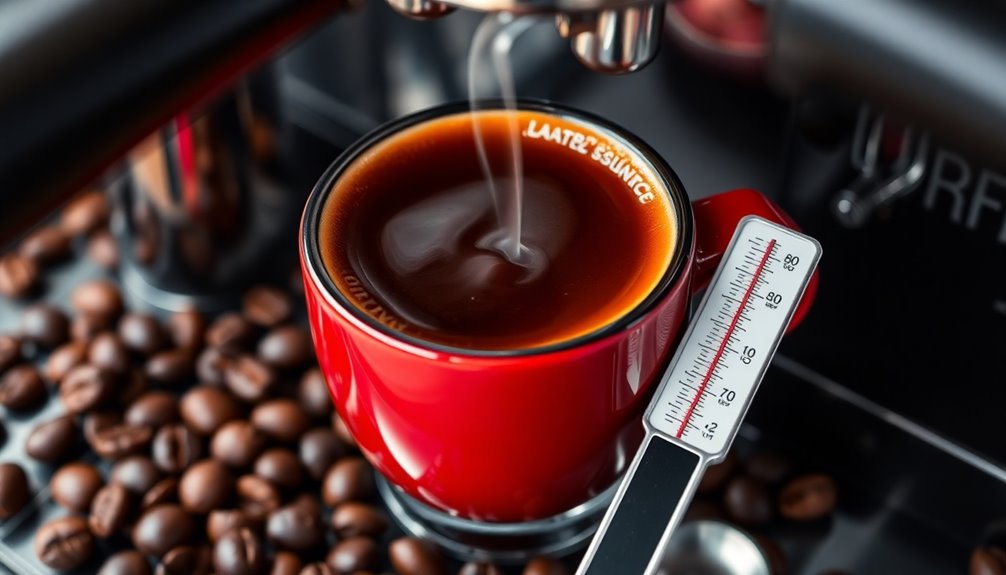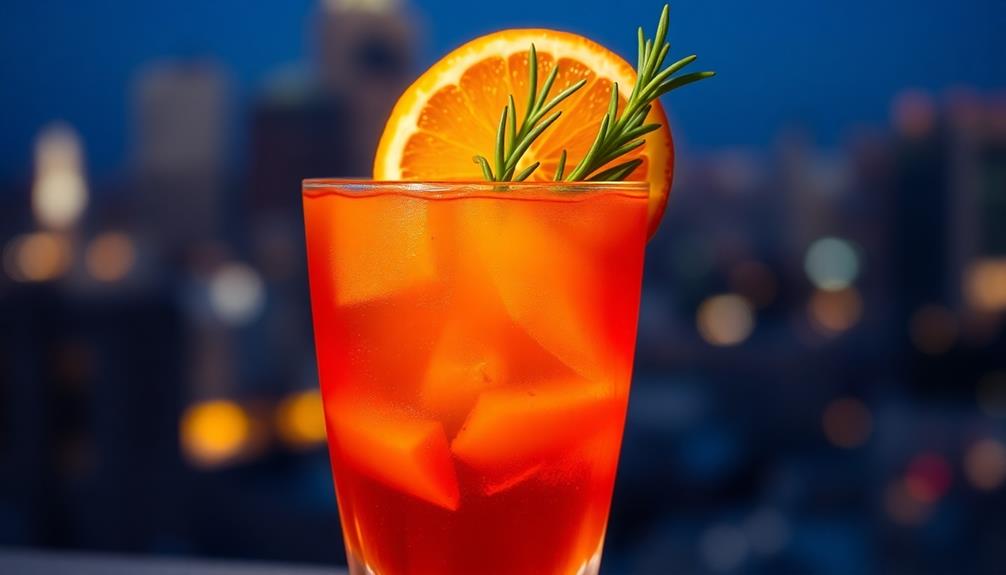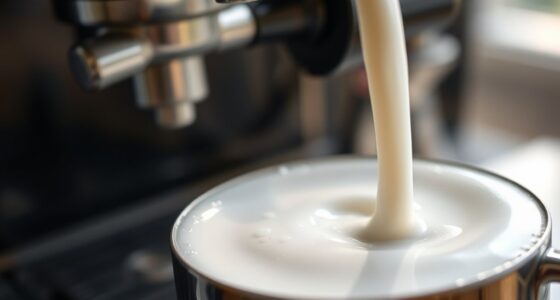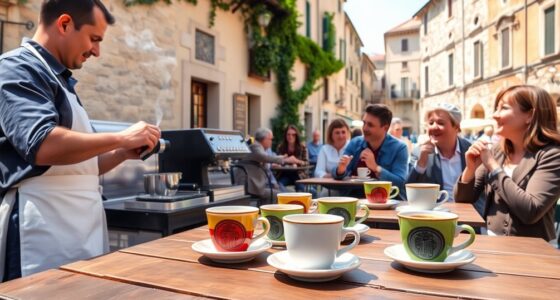Temperature greatly impacts espresso extraction and flavor. A small shift of just 6°C can alter the extraction yield, affecting sweetness, acidity, and bitterness. Higher temperatures enhance solubility, pulling out richer flavors, while lower temps preserve bright acidity and reduce harshness. Achieving thermal stability in your machine is key to consistent results. By understanding these temperature dynamics, you’ll optimize your brewing. Discover how specific techniques can further refine your espresso experience.
Key Takeaways
- Brewing temperature influences the extraction yield of flavor compounds, affecting overall taste and balance in espresso.
- A 6°C temperature shift can significantly alter solubility and flavor profiles, impacting sweetness and bitterness.
- Higher temperatures enhance the extraction of sugars and acids but may overshadow acidity with increased bitterness.
- Consistent brewing temperatures are achieved through thermal stability, utilizing PID controls and quality materials like stainless steel and brass.
- Accurate temperature measurement tools, such as thermofilters, are crucial for maintaining optimal brewing conditions and flavor profiles.
The Role of Temperature in Espresso Extraction
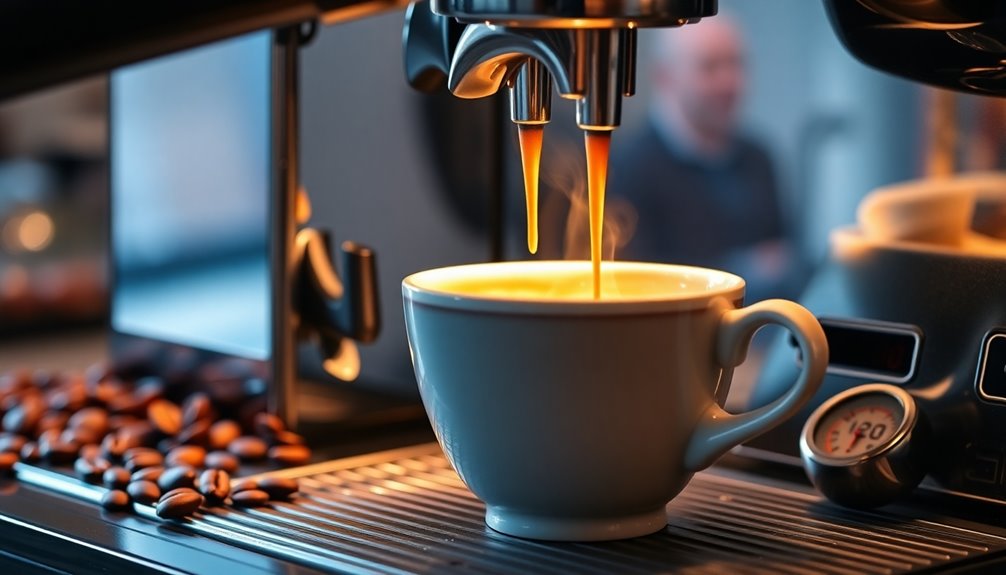
When you’re brewing espresso, the temperature plays a crucial role in determining the final taste and quality of your coffee.
The ideal brewing range sits between 92°C and 96°C (197°F and 205°F), where you can maximize desirable flavors while keeping bitterness in check.
Even a slight temperature shift of 6°C can greatly affect extraction yield, demonstrating just how sensitive espresso is to temperature changes.
Higher temperatures boost the solubility of coffee compounds, leading to increased extraction yields, but watch out for intensified bitterness and astringency.
Conversely, lowering the brew temperature can enhance acidity and reduce bitterness, making it a clever strategy during busy periods.
Balancing these factors is essential for perfecting your espresso experience. Understanding the mechanics of French press coffee can further enhance your overall coffee brewing skills.
Impact of Temperature on Flavor Profiles
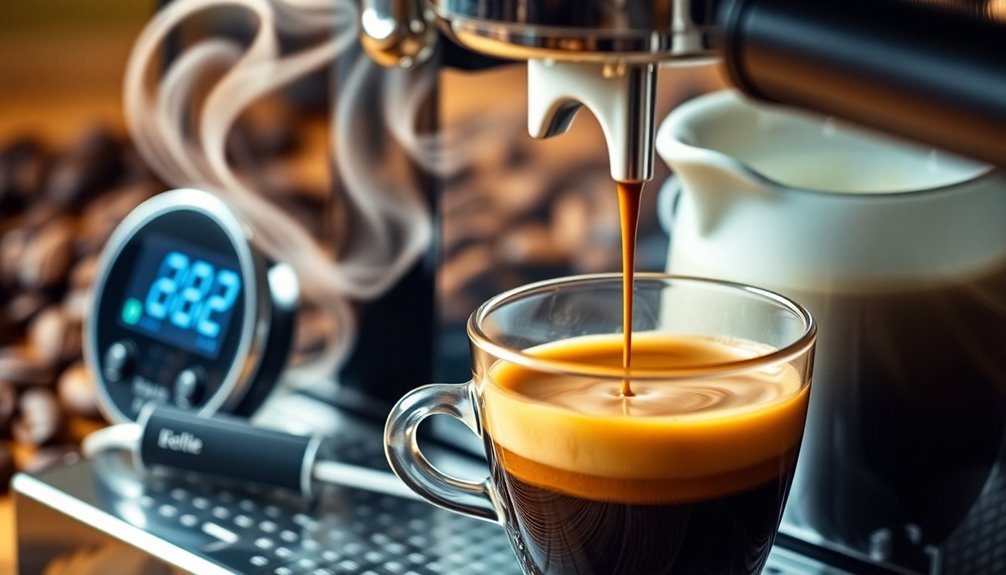
Although many factors influence the flavor profiles of espresso, temperature stands out as one of the most critical elements.
The brewing temperature you choose can greatly impact the extraction yield of flavor compounds in your coffee. Ideal brew temperatures between 92°C and 96°C enhance sweetness and body, while higher temperatures can increase bitterness, overshadowing acidity.
Just a 6°C shift can alter extraction yield by over half a percent, demonstrating how sensitive flavor profiles are to minor adjustments.
When you brew at lower temperatures, you’ll notice a brighter acidity and less body. Conversely, higher temperatures boost body and sweetness but may introduce astringency. Additionally, understanding the role of antioxidants in coffee can further enhance your appreciation of its flavor complexities.
Understanding these nuances helps you master espresso brewing for your desired flavor experience.
Understanding Thermal Stability in Espresso Machines
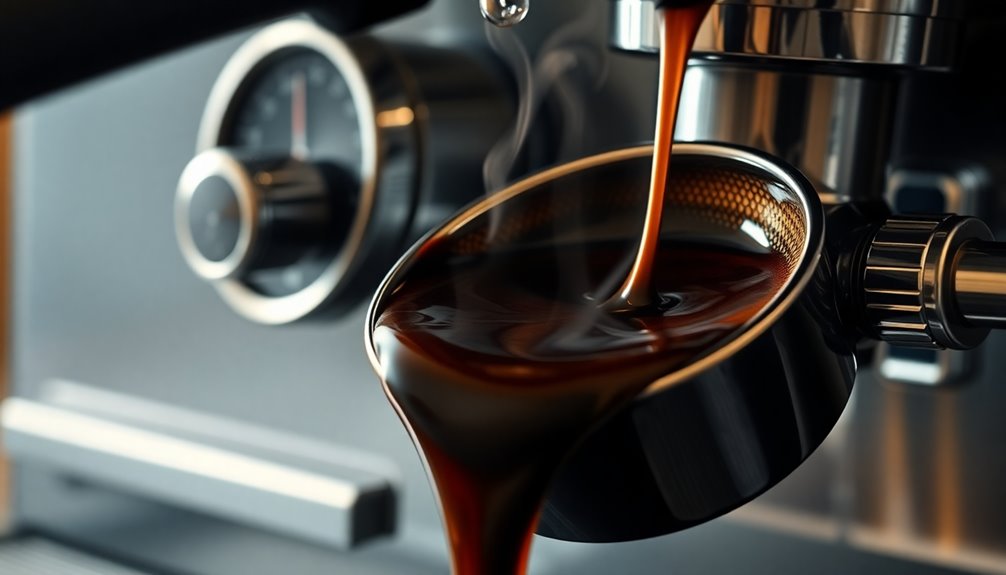
Thermal stability in espresso machines is essential for achieving consistent brewing temperatures, which directly affect the quality of your espresso extraction.
High-quality machines often utilize PID controls to minimize temperature fluctuations, ensuring that your brewing remains steady throughout the process.
Materials like stainless steel and brass enhance thermal stability, allowing for rapid adjustments in temperature.
Additionally, machines with higher thermal inertia, such as the Rancilio Silvia Pro X, provide better temperature consistency, leading to more reliable extraction quality.
To further enhance espresso quality, accurate temperature measurement tools like thermofilters enable you to maintain precise control over brewing temperatures.
With these elements in place, you can enjoy a more consistent extraction and a superior espresso experience. Furthermore, like color accuracy in home cinema projectors, the precision in temperature control contributes significantly to the overall flavor profile of the espresso.
Techniques for Regulating Brewing Temperature
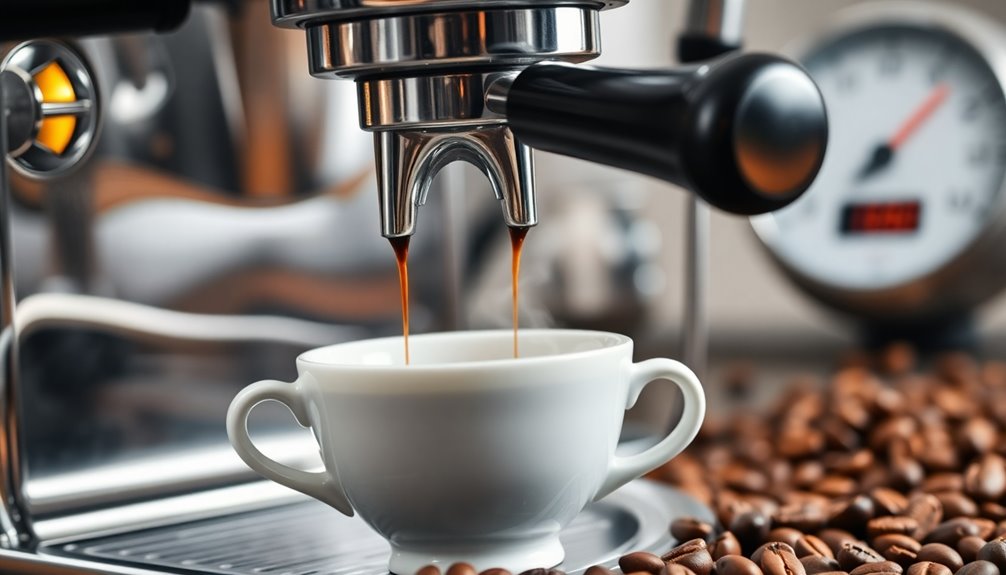
Effective techniques for regulating brewing temperature can greatly enhance your espresso extraction. Here are three methods to contemplate:
- PID Controls: Utilize machines with PID controls for precise temperature management, ensuring consistent flavor across shots.
- Thermofilters: Measure real-time brewing temperatures with thermofilters, allowing you to adjust quickly for ideal flavor compounds during extraction.
- Material Choice: Opt for high-quality equipment made from stainless steel or brass for improved thermal stability, so you can counteract temperature changes effectively. Additionally, consider integrating smart home devices that can monitor and adjust your brewing environment for optimal results.
The Relationship Between Temperature and Coffee Chemistry
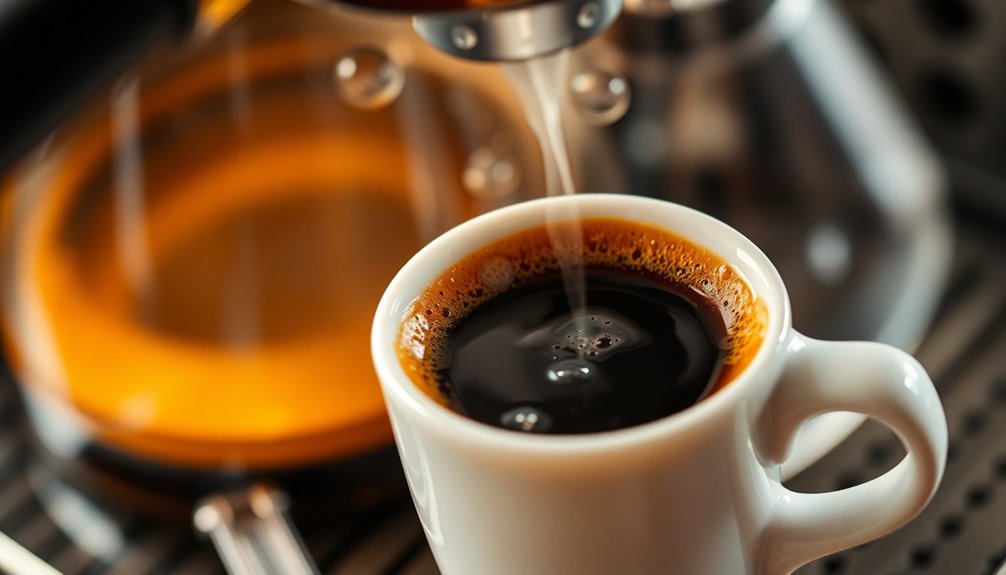
When you brew espresso, the temperature plays an essential role in shaping the coffee’s chemistry and ultimately its flavor. Higher brewing temperatures increase the solubility of various chemical compounds, enhancing sweetness and body while risking bitterness and astringency.
Just a 6°C rise can notably alter the extraction yield, impacting the balance of flavor compounds. For example, sucrose extraction spikes between 70°C and 94°C, while citric and malic acids remain stable.
Curiously, while higher temperatures can extract more acids, they can also pull less polar compounds associated with bitterness, resulting in a less acidic taste. Additionally, some flavor compounds, like phenolics, are sensitive to temperature changes, which can disrupt the overall flavor profile of your espresso. Understanding the flushing mechanisms in toilets can also highlight the importance of temperature control in various systems.
Frequently Asked Questions
How Does Temperature Affect the Taste of Espresso?
Temperature considerably affects the taste of your espresso.
When you brew at higher temperatures, you’ll notice a richer body and enhanced sweetness, but it can also introduce bitterness.
Conversely, brewing at lower temperatures often brings out brighter acidity and a cleaner flavor, reducing the bitter notes.
Just a small change in temperature can drastically alter your espresso’s profile, so experimenting within the ideal range can lead to your perfect cup.
How Does Temperature Affect Coffee Extraction?
Imagine your coffee beans dancing in a hot bath—temperature’s their rhythm!
When you brew coffee, the heat acts like a conductor, guiding the extraction process. Higher temperatures pull more flavors, giving you a rich, bold cup, but they can also introduce bitterness.
On the flip side, cooler temps create a lighter, more delicate brew with bright acidity.
What Is the Science Behind Espresso Extraction?
The science behind espresso extraction revolves around how water interacts with coffee grounds.
When you force hot water through finely-ground coffee, it dissolves various compounds, creating the flavor profile you love. Different compounds dissolve at different rates, so adjusting water temperature can enhance or diminish specific flavors.
What Affects the Taste of Espresso?
Imagine a symphony of flavors dancing on your palate. The taste of espresso isn’t just about the beans; it’s influenced by factors like grind size, water quality, and brew time.
Each element plays a role in crafting that perfect shot. If you’re aiming for sweetness, you’ll want to experiment with temperature, as it can either elevate or diminish the flavors.
Balance is key, and every choice shapes your espresso experience beautifully.
Conclusion
In the world of espresso, temperature is your secret weapon for revealing a symphony of flavors. By mastering the art of temperature control, you can transform each cup into a masterpiece that dances on your palate. Remember, the delicate balance between heat and extraction can make the difference between a bitter brew and a sweet serenade. So, embrace the science, experiment with techniques, and let every sip take you on a flavorful journey that warms your soul.
